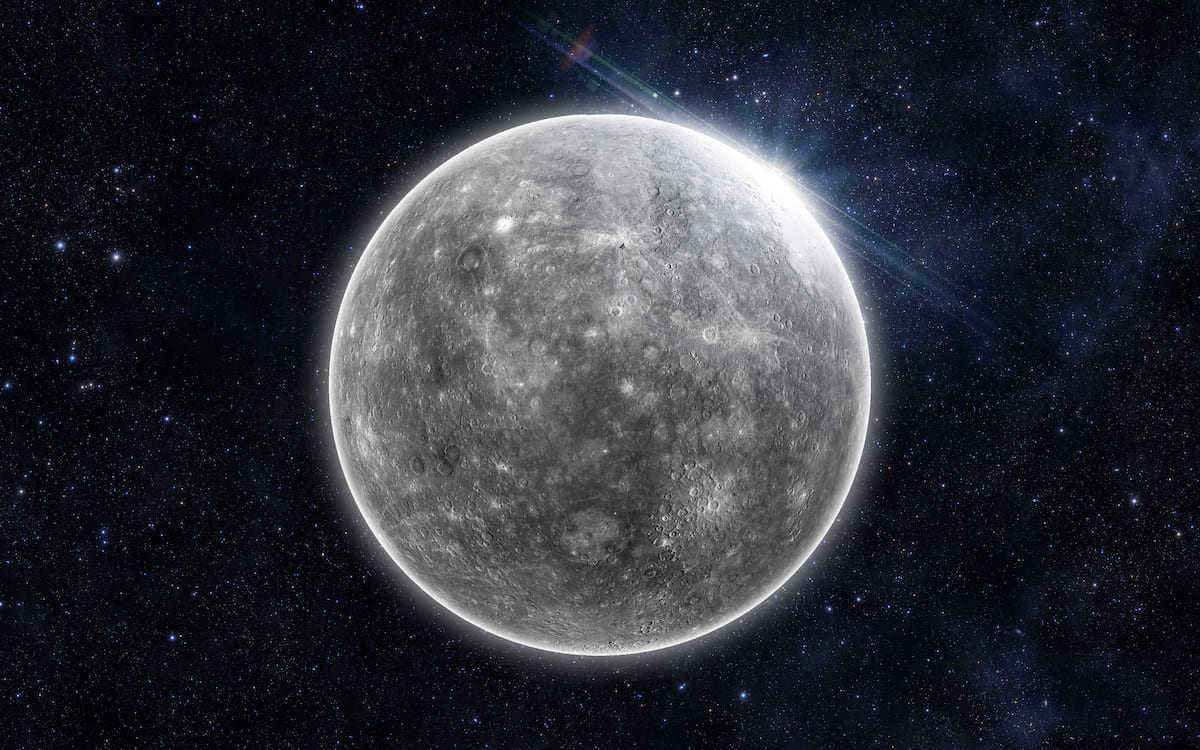

During the period known as the Lunar Cataclysm, various celestial bodies, including planets and their satellites, experienced the formation of craters. Interestingly, it is speculated that the planet closest to the Sun, Mercury, may have been adorned with diamonds. How did scientists come to this intriguing conclusion?
For more information, you can refer to the original article written by journalist Ramin Skibba, which can be found on the Wired website.
In a recent study conducted by geologist Kevin Cannon from the Colorado School of Mines, it is proposed that approximately 4 million years ago, asteroids collided with Mercury, causing the graphite that was abundant on the planet’s surface to fracture into fragments of diamonds. Cannon attributes this phenomenon to the tremendous force generated by the impact of space rocks traveling at speeds of tens of kilometers per second.
Mercury: A One-of-a-Kind Planet
Mercury stands apart from the rest of the planets in our solar system. This diminutive celestial body is even smaller than Titan, a moon orbiting Saturn, which scientists have identified as a prime candidate for finding extraterrestrial life. Additionally, Mercury is dwarfed by Ganymede, a moon of Jupiter that boasts the distinction of being the only moon with its own magnetic field. Remarkably, a year on Mercury is incredibly brief, lasting only 88 days. However, a day on this unique planet lasts slightly over 58 days, meaning that Mercury experiences just one and a half days in a year.
Mercury’s daytime temperature, which can reach 426°C, is second only to Venus. At night, when it has no atmosphere, it can freeze to minus 178°C. However, it is not these measurements that set Mercury apart from the other planets. Scientists are fascinated by the presence of carbon reserves on the planet, in the form of graphite. These reserves were transformed into diamonds due to asteroid impacts around 4 million years ago, creating a diamond-covered surface on the hottest planet in our solar system.
This transformation occurred during the Late Heavy Bombardment, also known as the Lunar Cataclysm. This event is believed to have caused the formation of numerous craters on planets and their moons, including the Moon itself. It is possible that Mercury experienced far more impacts than Earth’s moon, resulting in a surface that is completely covered in craters.
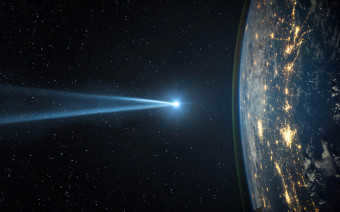

A surface adorned with precious stones
Mercury, prior to the occurrence of the Lunar Cataclysm, was once enveloped in vast oceans of molten rock, which subsequently cooled and solidified. According to the ongoing research of Kevin Cannon, it appears that a layer of graphite floated atop the solidified surface, measuring approximately 100 meters in thickness. The impact of asteroids subjected 30% to 60% of this graphite layer to immense pressure, resulting in the formation of what is known as “Mach diamonds”.
It is speculated that this phenomenon is responsible for the abundance of precious stones that adorn the surface of Mercury. However, Cannon proposes that these diamonds are not evenly distributed, with the possibility of being small, scattered, or even buried throughout the planet. Other studies have provided data that supports the conclusions of this geologist.
According to some planetologists supporting Cannon’s theory, they have observed dark patches of graphite in images of Mercury captured by cameras on board the Messenger spacecraft, which belongs to NASA.
Experts say that Mercury has had a high concentration of carbon since its formation. During the planet’s formation, various elements combined with each other primarily in the form of metals and rocks. The metallic elements sank and formed the core of the planet, while the rocky elements solidified on top. What sets Mercury apart from other planets is that a significant portion of the carbon did not transform into metallic cores and mantles, but instead became embedded in the planet’s crust. While diamonds are typically created from carbon deep beneath the Earth’s surface, on Mercury, the opposite occurs.
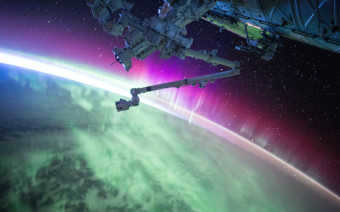
However, it is important to note that Mercury’s diamonds are not suitable for use in jewelry. The diamonds found on the planet are likely to be a random combination of elements, making them impure.
Exploring Mercury: The Search for Evidence
The exploration of Mercury is an ongoing mission, with scientists aiming to uncover the planet’s history. In 2025, a joint mission by the European and Japanese space agencies, known as BepiColombo, is set to send high-resolution cameras to Mercury. These cameras will enable scientists to search for any indications of diamonds.
Additional research into the asteroids that collided with a youthful Mercury could provide an explanation for the planet’s unusually large core despite its relatively small size. Certain scientists hypothesize that Mercury may have once been significantly larger, but a massive impact event caused its fragments to be scattered throughout the solar system.
Kevin Cannon postulates that diamonds may be present in more distant planets as well, not only on their surfaces but also formed deep beneath the surface under intense pressure.
Mercury, the inaugural celestial body in the solar system, held the least substantial rank among the group of nine planets for a significant period of time. However, as the saying goes, change is the only constant. In the year 2006, Pluto was stripped of its planetary title due to its oversized dimensions, being reclassified as a dwarf planet. Consequently, Mercury now resides at the extremity of the cosmic ensemble that orbits the Sun in an infinite number of loops. Nevertheless, this discussion pertains to the topic of size. The planet in question maintains its proximity to the Sun at an average distance of 57.91 million kilometers. To be precise, Mercury revolves around the Sun in an excessively elongated orbit spanning a distance of 360 million kilometers. As a result, it alternates between being further away from and closer to the Sun. During perihelion, which corresponds to the point of the orbit located nearest to the Sun, the planet approaches the scorching celestial body at a distance of 45.9 million kilometers. Conversely, during aphelion, which signifies the point on the orbit that is furthest from the Sun, the distance augments and reaches 69.82 million kilometers.
When it comes to the Earth, the scale is somewhat different. Mercury occasionally gets as close as 82 million km to us or diverges to a distance of 217 million km. However, just because it is the smallest planet does not mean that it can be easily and extensively observed through a telescope. In terms of its distance from the Sun, Mercury diverges at an angular distance of 28 degrees. This means that the planet can only be observed from Earth shortly before dawn or after sunset, when it is almost at the horizon line. Additionally, only half of Mercury’s body can be seen from Earth. The planet orbits at a speed of 48 kilometers per second and completes a full revolution around the Sun in 88 Earth days. The orbital eccentricity, which indicates how different the orbit is from a perfect circle, is 0.205. The tilt of Mercury’s orbit compared to the plane of the equator is 3 degrees, suggesting that it experiences little seasonal variation. Mercury is part of the Earth group, which also includes Mars, Earth, and Venus. All of these planets have a very high density. Mercury itself has a diameter of 4,880 kilometers. While this may not seem impressive, it is actually smaller than some of the satellites of other planets. For example, Ganymede, the largest satellite of Jupiter, has a diameter of 5262 km. The satellite Titan, which orbits Saturn, is also larger with a diameter of 5150 kilometers. Even Callisto, a satellite of Jupiter, has a larger diameter of 4820 km. However, the most well-known satellite in the solar system is the Moon, which has a diameter of 3,474 km.
Earth and Mercury
Mercury is actually not as unremarkable and unattractive as it may seem at first glance. Like everything else, it becomes more noticeable when compared to something else. In terms of size, this small planet is significantly smaller than Earth. In fact, when placed side by side, Mercury appears delicate and fragile in comparison to our own planet. Its mass is a mere 18 times less than that of Earth, and its volume is 17.8 times smaller. Additionally, the surface area of Mercury is 6.8 times smaller than that of Earth.
Characteristics of Mercury’s Orbital Movement
As previously mentioned, the planet completes a full revolution around the Sun in 88 days. It undergoes rotation around its axis in 59 Earth days. The average velocity of Mercury is 48 kilometers per second. During certain parts of its orbit, Mercury moves at a slower pace, while in other parts it moves faster. Its maximum speed at perihelion reaches 59 kilometers per second. The planet endeavors to swiftly traverse the section closest to the Sun. At aphelion, Mercury’s speed is 39 kilometers per second. The interplay between the velocity of rotation around the axis and the orbital velocity yields a remarkable effect. For a duration of 59 days, any given section of the planet maintains the same position in relation to the celestial sky. It takes 2 Mercurian years or 176 days for that section to return to the Sun. Consequently, the solar day on the planet amounts to 176 days. At perihelion, an intriguing phenomenon arises. During this time, the speed of orbital rotation surpasses that of the motion around the axis. Hence, the Joshua effect (referring to the biblical figure who halted the Sun) occurs at longitudes oriented towards the luminary.
< h3 >Sunrise on an alien world< /h3 >
The Sun comes to a halt and then commences moving in the opposite direction. The celestial body gravitates towards the East, completely disregarding its designated western trajectory. This sequence of events persists for a span of 7 days, until Mercury surpasses the nearest point in its orbit to the Sun. Subsequently, its orbital velocity begins to diminish and the Sun’s motion decelerates. At the juncture where their velocities align, the celestial body comes to a halt. After a brief interval, it commences moving in the opposite direction – from east to west. In terms of longitudes, the phenomenon becomes even more astonishing. Inhabiting individuals would witness two sunsets and two sunrises. Initially, the Sun would ascend, as expected, in the east. Within an instant, it would halt. Subsequently, it would initiate a retrograde motion and vanish beyond the horizon. After the passage of 7 days, it would once again radiate in the east and ascend to its zenith unimpeded. These remarkable attributes of the planet’s orbit were discovered in the 1960s. Previously, scientists maintained the belief that it perpetually turned one side towards the Sun, and rotated around its axis at the same velocity as the yellow star.
Mercury’s composition
Until the first half of the 1970s, very little was known about the structure of Mercury. In March 1974, an interplanetary station called Mariner-10 flew a distance of 703 km from the planet. It repeated this maneuver in September of the same year, bringing its distance to Mercury down to 48,000 kilometers. The station then made another turn in 1975, this time at a distance of 327 km. Notably, the equipment on board recorded the planet’s magnetic field, which, although not particularly strong, was still significant compared to Venus. Mercury’s magnetic field is 100 times weaker than Earth’s, and its magnetic axis is offset by 2 degrees from its axis of rotation. The presence of this field suggests that Mercury has a core where it is generated. The current understanding of the planet’s structure is that it has a hot core made of iron and nickel, surrounded by a silicate shell. The core has a temperature of 730 degrees Celsius and is quite large, accounting for 70% of the planet’s total mass. Its diameter measures 3,600 kilometers, while the silicate layer is 650 kilometers thick.
The outer layer of the Earth
The planet is scattered with craters. In certain areas, they are densely located, while in others, they are sparse. The most massive crater, known as Beethoven, has a diameter of 625 km. Scientists hypothesize that the flat terrain is younger compared to the area abundant with craters. This flat surface was created due to volcanic activity, which covered the craters and leveled the surface. The largest feature in this region is called the Plain of Heat, which is an ancient crater measuring 1300 kilometers in diameter. It is surrounded by a ring of mountains. It is believed that lava eruptions submerged this area, rendering it nearly invisible. On the opposite side of this plain, there are numerous uplands, reaching heights of up to 2 km. The lowlands are narrow. It appears that a significant asteroid impact caused a shift in Mercury’s interior. This resulted in a large depression in one area, while on the other side, the crust rose, leading to rock movements and fractures. Similar formations can be observed elsewhere on the planet, each with its own unique geological history. These formations have a wedge-like shape, with widths spanning tens of kilometers. It seems that these are rocks that were compressed under immense pressure from the planet’s deep interior.
Exploration
Despite its close proximity to Earth, researching Mercury is a challenging endeavor due to the unique characteristics of its orbit. The planet is not easily visible in the sky, making close observation necessary for a comprehensive understanding. In 1974, the Mariner 10 interplanetary probe provided an opportunity to study Mercury up close. The probe captured images, allowing scientists to map nearly half of the planet’s surface. In 2008, the Messenger spacecraft also focused its attention on Mercury. Ongoing research will continue to shed light on this mysterious planet. The surprises it holds are yet to be discovered, as space remains unpredictable and its inhabitants elusive.
Key facts about Mercury:
- Mercury is the smallest planet in the solar system.
- One day on this planet is equivalent to 59 days on Earth, and one year is equivalent to 88 days.
- Mercury, the planet closest to the Sun, is located approximately 58 million kilometers away.
- Belonging to the Earth group, Mercury is a solid planet with a heavily cratered surface.
- Mercury does not have any natural satellites.
- The planet’s exosphere is composed of sodium, oxygen, helium, potassium, and hydrogen.
- Unlike other planets, Mercury does not have a ring system.
- There is currently no evidence of life on Mercury, where temperatures can reach up to 430 degrees during the day and drop to -180 degrees at night.
From the closest point to the Sun’s surface, the Sun appears three times larger on Mercury than it does from Earth.
Mercury, the smallest of the terrestrial planets in the Solar System, is the planet closest to the Sun. It was named after the ancient Roman god of commerce, Mercury, who was known for his speed, mirroring the planet’s fast movement across the sky compared to the other planets. With an orbital period of only 87.97 Earth days, Mercury has the shortest revolution around the Sun among all the planets in the solar system.
When observed from Earth, Mercury’s visible distance from the Sun never exceeds 28°. This close proximity to the Sun means that the planet can only be seen for a brief period after sunset or before sunrise, usually during twilight. When viewed through a telescope, Mercury exhibits phases similar to Venus and the Moon, ranging from a thin sickle to an almost full disk. Occasionally, it even passes across the Sun’s disk. The duration of Mercury’s phase changes corresponds to the synodic period of its orbit, which is approximately 116 days.
Mercury has the smallest inclination of all the planets in the Solar System, with an inclination of about 1/30 degree. However, it has the highest eccentricity among them, resulting in a perihelion distance from the Sun that is only about two-thirds (66%) of its distance at aphelion. The surface of Mercury is covered in impact craters and bears a resemblance to the Moon, suggesting that there has been no internal geological activity for the past billion years. Due to its lack of atmosphere, Mercury experiences the greatest variation in surface temperature of any planet in the solar system, ranging from 100 K (-173 °C) at night to 700 K (+427 °C) during the day in the equatorial regions. The polar regions remain consistently cooled below 180 K (-93 °C). Finally, it is worth noting that Mercury does not have any known natural satellites.
Mercury has been explored by two spacecraft: Mariner 10 conducted a close flyby in 1974 and 1975, while MESSENGER extensively studied the planet from 2008 to 2015. MESSENGER successfully entered orbit around Mercury in 2011 and, after completing over 4,000 orbits in four years, exhausted its fuel and impacted the surface on April 30, 2015. The upcoming BepiColombo mission is set to reach Mercury in 2025.
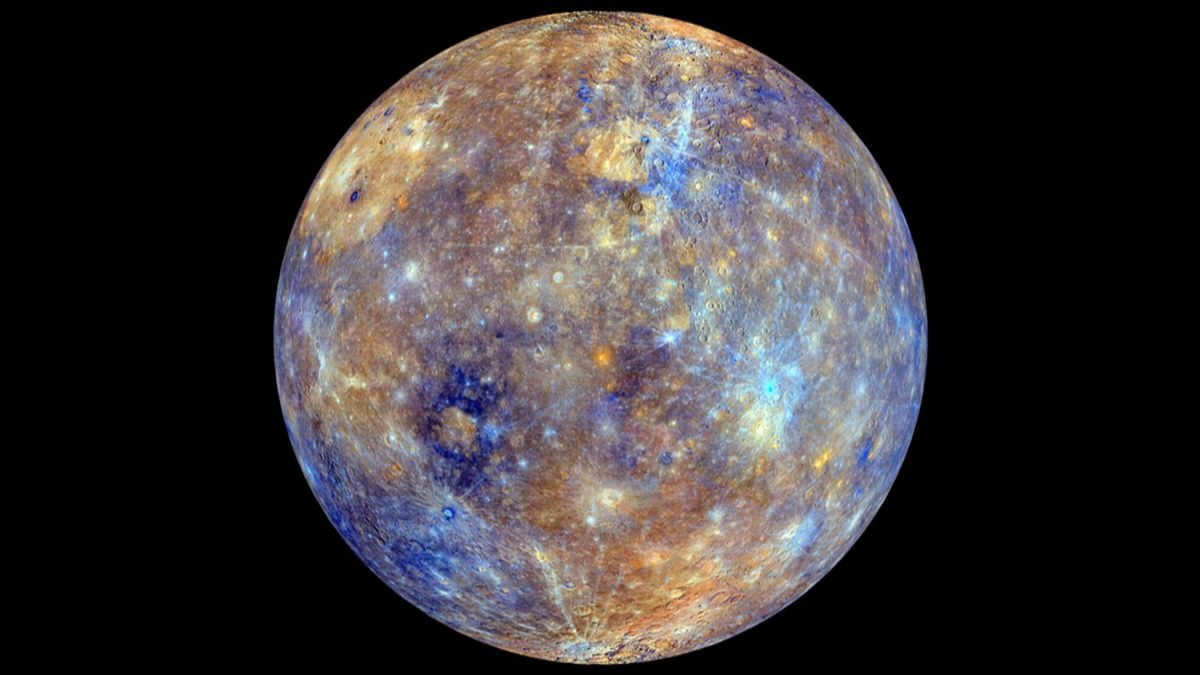

Overview
Mercury is positioned at an average distance of approximately 58 million kilometers (57.91 million km) from the Sun. It completes one orbit around the Sun in just 88 Earth days. The apparent brightness of Mercury varies from -1.9 to 5.5 during its different positions in relation to the Sun, making it difficult to observe.
Mercury is a member of the Earth’s planetary group. It shares many physical characteristics with the Moon. Unlike the Moon, however, Mercury does not have any natural satellites. Nevertheless, it does possess a very thin atmosphere. The planet’s magnetic field is generated by its large iron core, which is about 0.01 times as strong as Earth’s magnetic field. In fact, Mercury’s core makes up a whopping 83% of the planet’s total volume. Surface temperatures on Mercury can vary greatly, ranging from 80 to 700 K (-190 to +430 °C). Interestingly, the side of the planet facing the Sun experiences much higher temperatures compared to the polar regions and the opposite side of the planet.
With a radius of just 2439.7 ± 1.0 km, Mercury is smaller in size than Ganymede, the largest satellite of Jupiter, and Titan, the largest satellite of Saturn. However, despite its smaller size, Mercury has a greater mass than Ganymede and Titan combined. The planet’s mass is 3.3⋅1023 kilograms. Mercury’s average density is quite high at 5.43 g/cm3, which is only slightly lower than that of Earth. This suggests that Mercury has a higher concentration of metals in its interior, even though Earth is much larger in size. The acceleration due to gravity on Mercury is 3.70 m/s2 and its second escape velocity is 4.25 km/s. Our knowledge of the planet is still limited, but in 2009 scientists were able to create the first comprehensive map of Mercury using data from the Mariner 10 and Messenger spacecraft.
Following the demotion of Pluto from its planetary status in 2006, Mercury was designated as the smallest planet within our solar system.
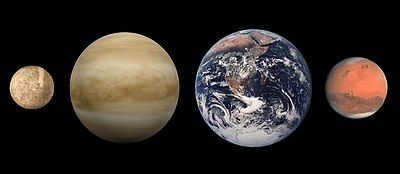
Astronomy
Astronomical features
Mercury has an apparent stellar magnitude that varies from -1.9m to 5.5m, but it is not easily detectable due to its close proximity to the Sun (maximum 28.3°).
The most ideal conditions for observing Mercury are at low latitudes and near the equator: this is because the duration of twilight is shortest in these regions. In mid-latitudes, it is much more challenging to locate Mercury and can only be seen during the period of best elongations. At high latitudes, the planet is almost never visible in the dark night sky, except during eclipses. Mercury is visible for a very brief period of time after sunset.
The equinoxes provide the best opportunity for observing Mercury in the middle latitudes of both hemispheres because the duration of twilight is minimal. The ideal time to observe the planet is during morning or evening twilight when it is at its farthest point from the Sun in the sky, which occurs several times a year.
Mercury is represented by a stylized image of the winged helmet of the god Mercury with his caduceus.
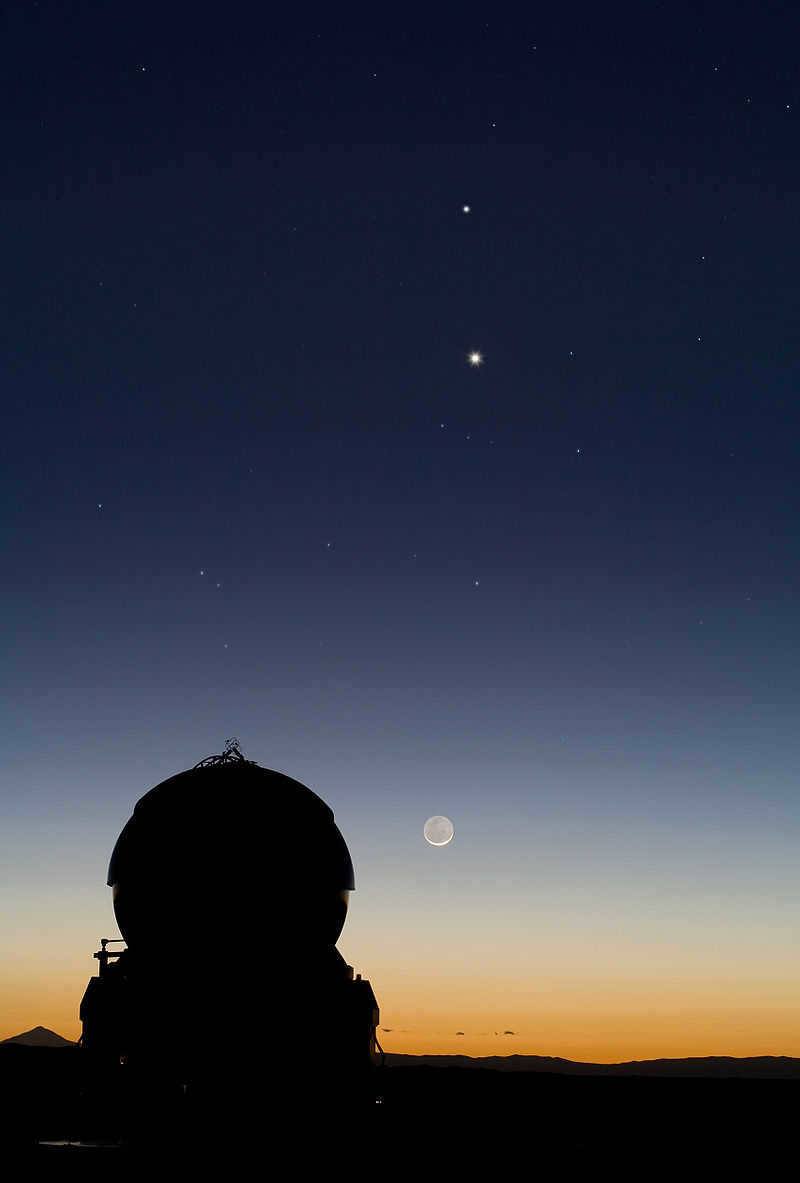
Mercury’s orbital dynamics
Mercury completes its orbit around the Sun in approximately 87.97 Earth days. A sidereal day on Mercury lasts about 58.65 Earth days, while a solar day is about 176 Earth days. Mercury follows a highly elongated elliptical orbit with an eccentricity of 0.205. Its average distance from the Sun is approximately 57.91 million km (0.387 astronomical units). At its closest point to the Sun (perihelion), Mercury is about 45.9 million km away (0.3 astronomical units), while at its farthest point (aphelion), it is about 69.7 million km away (0.46 astronomical units). This means that Mercury is over one and a half times closer to the Sun at perihelion compared to aphelion. The inclination of Mercury’s orbit to the ecliptic plane is about 7 degrees. The average orbital velocity of the planet is approximately 48 km/s (38.7 km/s at aphelion and 56.6 km/s at perihelion). The distance between Mercury and Earth varies from 82 to 217 million km. As a result, when observed from Earth, Mercury appears to shift its position relative to the Sun, moving from west (morning visibility) to east (evening visibility) over the course of a few days.
Due to the planet’s movement, it is possible to distinguish “hot longitudes” – two opposite meridians that take turns facing the Sun during Mercury’s perihelion passage. These meridians can experience unusually high temperatures, even by Mercurian standards.
As Mercury does not have seasons, there are regions near the poles that remain unexposed to the Sun’s rays. Studies conducted using the Arecibo radio telescope indicate the presence of glaciers in these cold and dark areas. It is likely that a layer of water ice, measuring up to 2 meters thick, exists beneath a layer of dust.
The interaction of Mercury’s axial and orbital movements, caused by its elongated orbit, leads to another fascinating occurrence. The planet’s rotational velocity around its axis remains relatively constant, while its orbital velocity undergoes continuous change. During the section of its orbit near perihelion, which lasts for approximately 8 days, the angular velocity of its orbital motion surpasses that of its rotational motion. As a result, the Sun appears to trace a loop in Mercury’s sky, similar to how Mercury itself appears in Earth’s sky. When the Sun is at longitudes close to 90 and 270 degrees, it halts after rising, reverses direction, and sets near the same point where it originally rose. However, after a few days on Earth, the Sun rises again from the same point and remains visible for an extended period. This phenomenon is sometimes referred to as the Joshua effect, named after Joshua, who, as described in the Bible, once halted the Sun’s movement. The reverse pattern occurs during sunset.
It is worth noting that while Mars and Venus are the closest planets to Earth in terms of orbital location, Mercury is actually the planet that is closest to Earth on average. This is because the other planets are further away and not as “tethered” to the Sun.
Transiting across the Sun’s disk
Mercury’s transit across the Sun’s disk is a rare phenomenon in astronomy, although it occurs more frequently than Venus’ transit. This is due to Mercury’s closer proximity to the Sun and its shorter orbital period. Transits of Mercury can happen in either May or November. In the 21st century, there will be a total of 14 transits of Mercury, with the next one occurring on November 13, 2032.
It is also possible for Venus and Mercury to pass through the Sun simultaneously, but this occurrence is very uncommon. The nearest occurrence of both Venus and Mercury transiting at the same time will be on July 26, 69,163.
Mercury can also pass during a solar eclipse. This incredibly rare coincidence will happen on May 30, 6757.
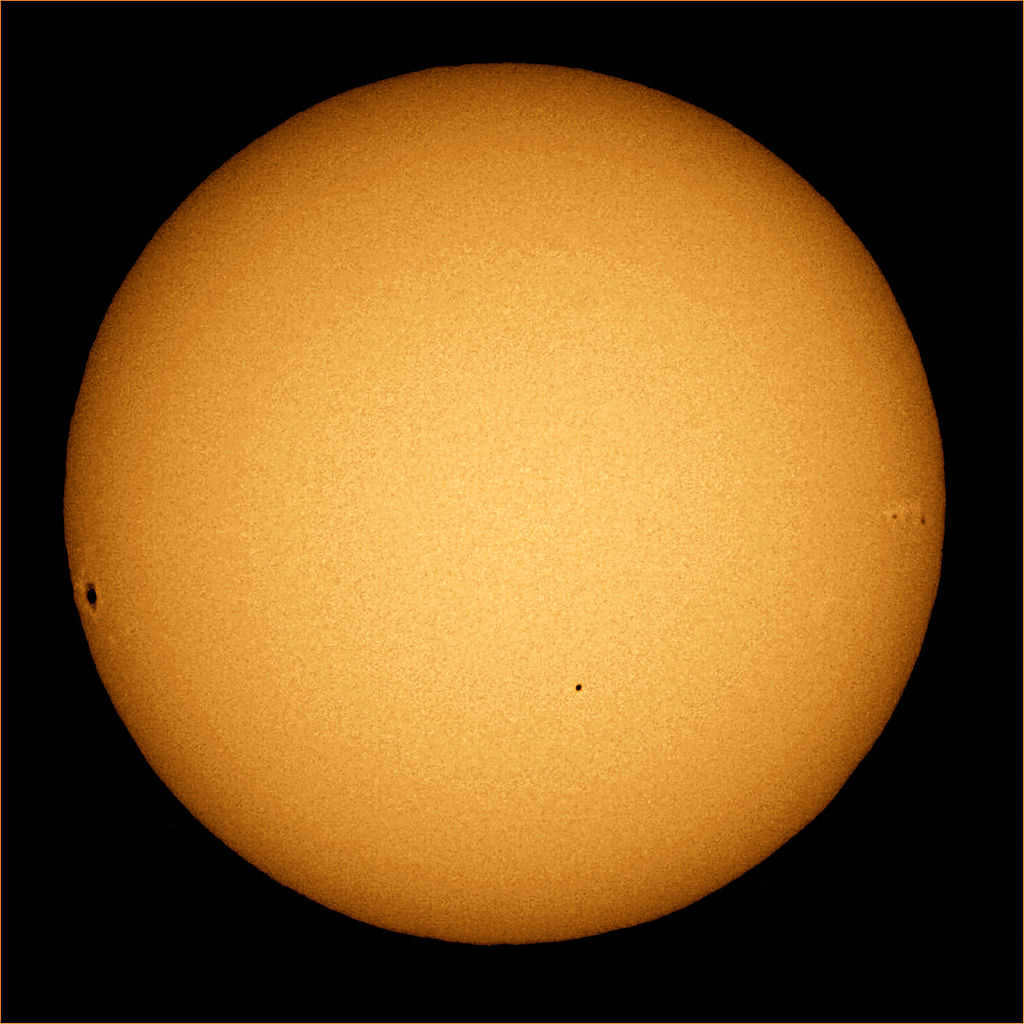

Unusual orbital procession
Due to its proximity to the Sun, Mercury experiences the strongest effects of the general theory of relativity compared to all other planets in the solar system. As early as 1859, the astronomer and mathematician Urbain Leverrier noted that there is a gradual shift in Mercury’s perihelion, which cannot be fully explained by the gravitational influence of the known planets according to Newtonian mechanics.
The rate of precession of Mercury’s perihelion in the heliocentric coordinate system is 574.10 ± 0.65″ per century, or 5600 angular seconds (≈1.7°) per century in the geocentric coordinate system. By applying Newtonian mechanics to calculate the influence of all other celestial bodies on Mercury, the precession is determined to be 531.63 ± 0.69 and 5557 angular seconds per century in the heliocentric and geocentric coordinate systems, respectively. In an effort to explain this observed phenomenon, Leverrier proposed the presence of an additional planet (or possibly a group of small asteroids) orbiting closer to the Sun than Mercury and contributing to the gravitational influence. Another explanation considered the unaccounted polar compression of the Sun. Leveraging previous success in the discovery of Neptune, which was found based on its impact on the orbit of Uranus, this hypothesis gained popularity and the hypothetical planet was even given the name Vulcan. However, Vulcan was never found.
Historiography
Ancient World and Middle Ages
The study of history has always been a complex task, especially when it comes to observing celestial bodies. In the case of Mercury, early observers believed that the planet seen in the morning was a different entity from the one observed in the evening. This led to the planet having two different names.
The earliest recorded observation of Mercury can be found in the Babylonian astrological tables known as “Mul apin.” These tables, believed to have been compiled by Assyrian astronomers around the 14th century B.C., provide valuable insights into the understanding of Mercury at that time. In the “Mul apin” tables, Mercury is referred to as UDU.IDIM.GU\U4.UD, which can be translated as the “jumping planet” or sometimes as Gu-utu. The association of Mercury with the god Ninurta is evident in these early records, and later on, the planet is referred to as “Nabu/Nebo” as a tribute to the god of wisdom and scribal art.
The Egyptians referred to him as Seth and Horus.
In ancient Greece during Hesiod’s time, the celestial body was known as Στίλβων (Stilbon, Stilbon, sometimes Stilpon; Sparkling) and Ἑρμάων (Hermaon, a derivative of the name of the god Hermes. Later on, the Greeks started calling the celestial body “Apollo”.
It is speculated that the name “Apollo” represented its visibility in the morning sky, while “Hermes” (“Hermaeon”) represented its visibility in the evening sky. According to other sources, the ancient Greeks referred to Mercury as Apollo and Stilbon (since 200 BC – Hermes). It was also simply known as the Star of Hermes.
The Romans chose to name the celestial body closest to the sun Mercury’s Star, in tribute to the swift-footed god of commerce, Mercury, due to its rapid movement across the sky, outpacing the other planets. An ancient Roman astronomer named Claudius Ptolemy, who resided in Egypt, documented the concept of a planet passing in front of the Sun’s disk in his notable work, “Hypotheses about the planets”. Ptolemy suggested that such an event had never been witnessed due to the small size of Mercury, making it difficult to observe, or because this phenomenon occurs infrequently.
In the realm of Germanic paganism, the god Odin was also linked with the planet Mercury and the intermediary role it played.
In the Hebrew language, the planet Mercury was referred to as “Kohav Hamah́” which translates to “Solar Planet”.
In the field of medieval Arabic astronomy, the renowned astronomer Az-Zarqali from Andalusia documented the shape of the deferent of Mercury’s geocentric orbit as resembling an oval, similar to that of an egg or a pine nut. Nonetheless, this speculation did not have any impact on his overall astronomical theory or the calculations he made. Moving forward to the 12th century, Ibn Baja made an intriguing observation of two celestial bodies appearing as spots on the surface of the Sun. Subsequently, the astronomer Ash-Shirazi from the Maragha observatory put forth the suggestion that his predecessor had actually witnessed the transit of either Mercury or Venus.
In ancient China, Mercury was known as Chen-hsing, also referred to as the “Morning Star”. It was correlated with the northward direction, the hue black, and the element of water in Wu-hsing. According to Chinese scholars, Mercury’s synodic period was acknowledged as 115.91 days in the Hanshu, and 115.88 days in the Hou Hanshu. In contemporary Chinese, Korean, Japanese, and Vietnamese societies, the celestial body became known as the “Water Star”.
In Indian mythology, Mercury was known as Budha (Sanskrit बुधः). This deity, who was the son of Soma, held supreme power over Wednesdays. According to various sources, the Indians referred to Mercury as Buddha and Roginea. In India, a 15th-century astronomer named Somayaji, who belonged to the Kerala school of Nilakansa Somayaji, developed a partially heliocentric planetary model. According to this model, Mercury orbited the Sun, which in turn orbited the Earth. This system bore some resemblance to the one developed by Tycho Brahe in the 16th century.
The Maya Indians associated Mercury with an owl (or possibly four owls, with two representing Mercury’s morning appearance and two representing his evening appearance). These owls were believed to be messengers from the afterlife.
Observations of Mercury during medieval times in the northern regions of Europe were hindered by the planet always being seen at dawn, either in the morning or evening, against the backdrop of a twilight sky and relatively low on the horizon, especially in higher latitudes. The best time for observing Mercury (its elongation) occurs a few times a year, lasting for approximately 10 days. Even during these periods, it is not easy to spot Mercury with the naked eye, as it appears as a relatively faint star against a relatively bright sky. There is a tale that Nicolaus Copernicus, who conducted astronomical observations in the foggy climate and higher latitudes of the Baltic States, regretted not having seen Mercury during his lifetime. This story is based on the fact that Copernicus’ work, “On the Rotations of the Celestial Spheres,” does not include any direct observations of Mercury, but instead describes the planet based on the findings of other astronomers. However, as Copernicus himself stated, it is still possible to “capture” Mercury from higher latitudes with patience and cleverness. Therefore, Copernicus was able to observe and study Mercury, but he relied on the observations of other astronomers when describing the planet.
The initial sighting of Mercury through a telescope was conducted by Galileo Galilei during the early 17th century. Although Galilei was able to witness the phases of Venus, the limitations of his telescope prevented him from observing the phases of Mercury. It wasn’t until November 7, 1631, when Pierre Gassendi became the first to observe the transit of a planet across the Sun’s surface using a telescope. The timing of this event had been previously predicted by Johannes Kepler. Then, in 1639, Giovanni Zupi utilized a telescope to discover that the orbital phases of Mercury were comparable to those of the Moon and Venus. These observations ultimately provided conclusive evidence that Mercury indeed orbits the Sun.
It is exceedingly uncommon for a planet to completely obscure the view of another planet from Earth. The phenomenon of Venus covering Mercury occurs only once every few centuries, and this remarkable event has been witnessed only once in recorded history – on May 28, 1737, by John Bevis at the esteemed Royal Greenwich Observatory. The next occurrence of Venus covering Mercury will take place on December 3, 2133.
Due to the challenges associated with observing Mercury, it has historically received less attention compared to other planets. In 1800, Johann Schröter, who meticulously studied the surface of Mercury, reported observing towering mountains that reached heights of 20 kilometers. Friedrich Bessel, using Schröter’s sketches, mistakenly calculated the planet’s rotation period to be 24 hours and its axial tilt to be 70°. In the 1880s, Giovanni Schiaparelli conducted more precise mapping of Mercury and proposed that its rotation period was actually 88 days, coinciding with its sideric period of revolution around the Sun influenced by tidal forces. The task of mapping Mercury was further advanced by Eugène Antoniadi, who published a comprehensive book in 1934 featuring both older maps and his own observations. Numerous features on Mercury’s surface were named based on Antoniadi’s mapping.
Mercury has a unique rotation pattern within the solar system. It is locked in a tidal embrace with the Sun, causing it to rotate at a rate that is two-thirds of its orbital period. This phenomenon, known as orbital resonance, was first observed by Italian astronomer Giuseppe Colombo. Essentially, Mercury completes three rotations on its axis for every two revolutions it makes around the Sun, as seen from the perspective of the fixed stars. However, when viewed from the Sun’s reference frame, which is synchronized with the planet’s orbital motion, Mercury only completes one rotation every two planetary years. Thus, an observer on Mercury would only experience one day in the span of two Mercury years. The accuracy of this observation was confirmed by data from the Mariner 10 spacecraft. It is important to note that the maps created by astronomers Schiaparelli and Antoniadi are not incorrect. Rather, they depict the same features of the planet during every other revolution around the Sun. This is due to the poor observational conditions that occur when Mercury is facing the Sun on the opposite side, as dictated by the geometry of its orbit at that time.
The close vicinity of the Sun presents a challenge when it comes to using telescopes to study Mercury. One example of this is the Hubble telescope, which has never been and will never be employed for observing this planet. Its equipment is not designed to handle observations of objects in close proximity to the Sun. Attempting to do so would result in irreparable damage to the instrument.
In modern times, the study of Mercury is conducted through the use of radio telescopes and spacecraft.
Mercury, a member of the Earth group, remains the most mysterious planet. Throughout the 20th century, various methods were employed to study it, including telescopic, radio astronomical, radar, and spacecraft studies. In 1961, Howard, Barrett, and Haddock conducted the first radio astronomical measurements of Mercury using a reflector equipped with two radiometers. By 1966, the data collected provided valuable insights into Mercury’s surface temperature, revealing that it reaches 600 K at its sunlit point and drops to 150 K on the unlit side. The first radar observations of Mercury took place in June 1962 at the IRE, led by V.A. Kotelnikov. These observations unveiled the striking similarity in reflective properties between Mercury and the Moon. In early 1963, foreign press published information about the Soviet scientists’ study of the radio signal reflected from Mercury’s surface. Additionally, in 1965, the radio telescope in Arecibo conducted similar observations, allowing scientists to estimate Mercury’s rotation period to be 59 days.
It is an incredibly challenging task to send a spacecraft to Mercury. The first step is to decelerate the vehicle in order to place it into a highly elliptical orbit. Once it reaches close proximity to Mercury, it must then be propelled into the planet’s orbit. Throughout the journey, the spacecraft will gather a substantial amount of speed, and due to Mercury’s weak gravity, the second maneuver necessitates a significant amount of fuel. As a result, only two spacecraft have been able to explore Mercury.
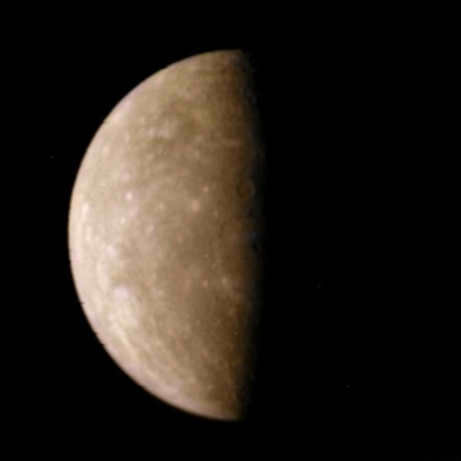
The initial unmanned spacecraft to investigate Mercury was the Mariner 10, a United States mission that conducted three flybys of the planet from 1974 to 1975. The closest approach was 320 km, and the mission yielded thousands of images, which captured approximately 45% of the planet’s surface. Subsequent observations from Earth indicated the potential presence of water ice in the planet’s polar craters.
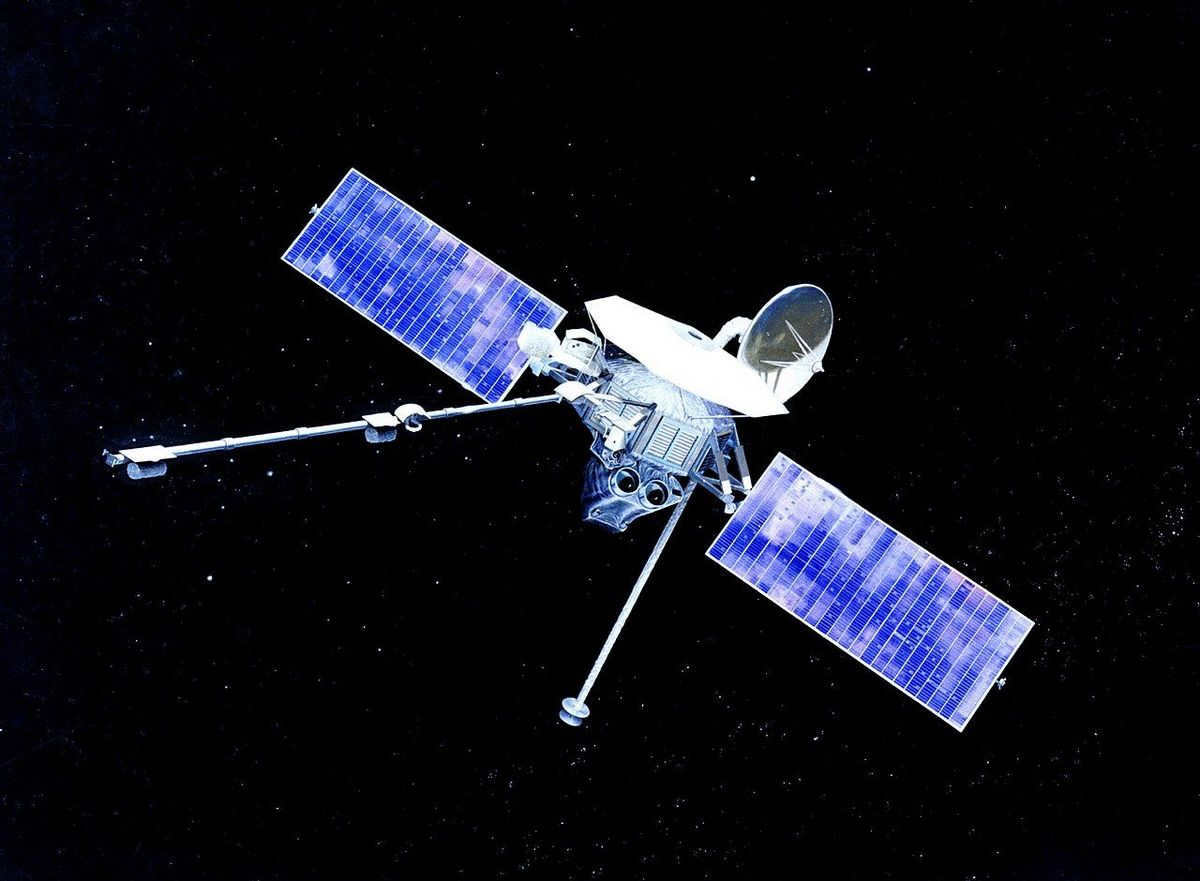
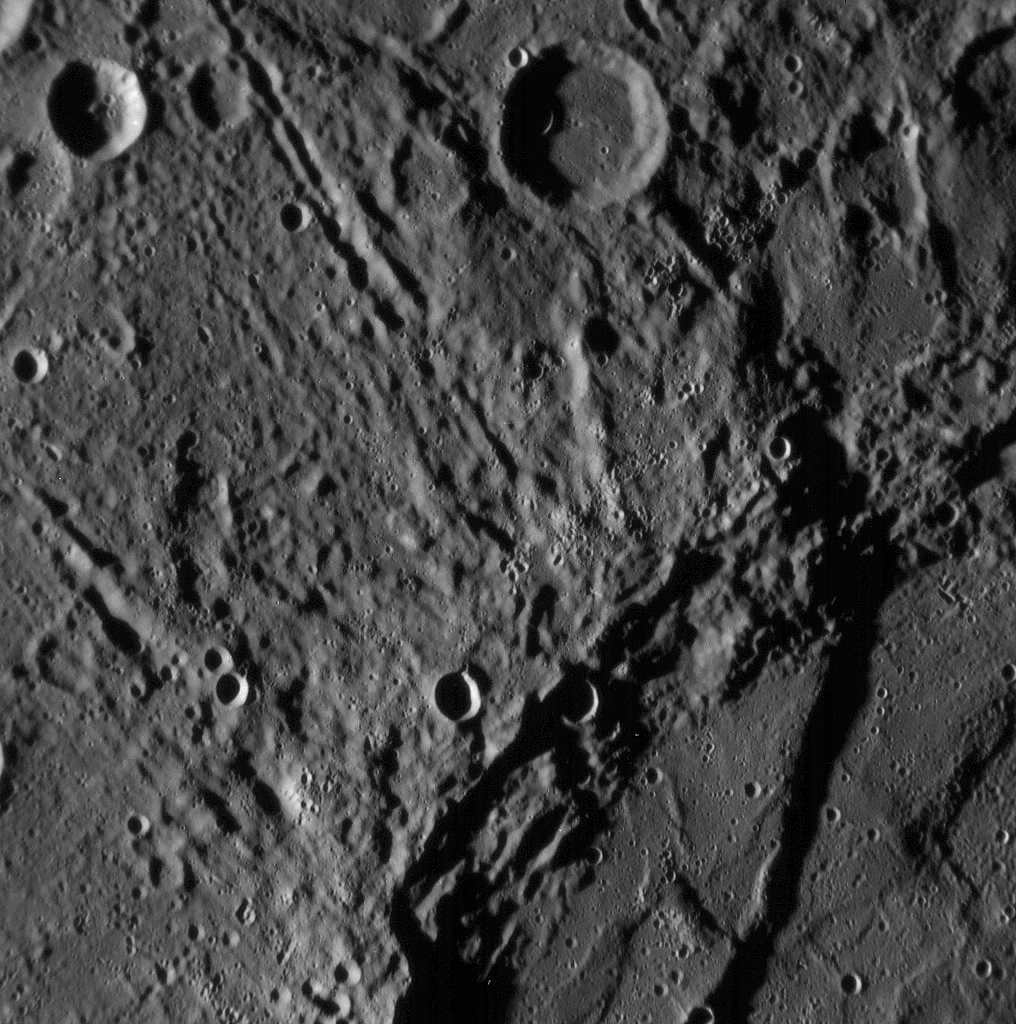
In 2009, the first comprehensive map of Mercury was created thanks to the utilization of images captured by Mariner 10 and Messenger.
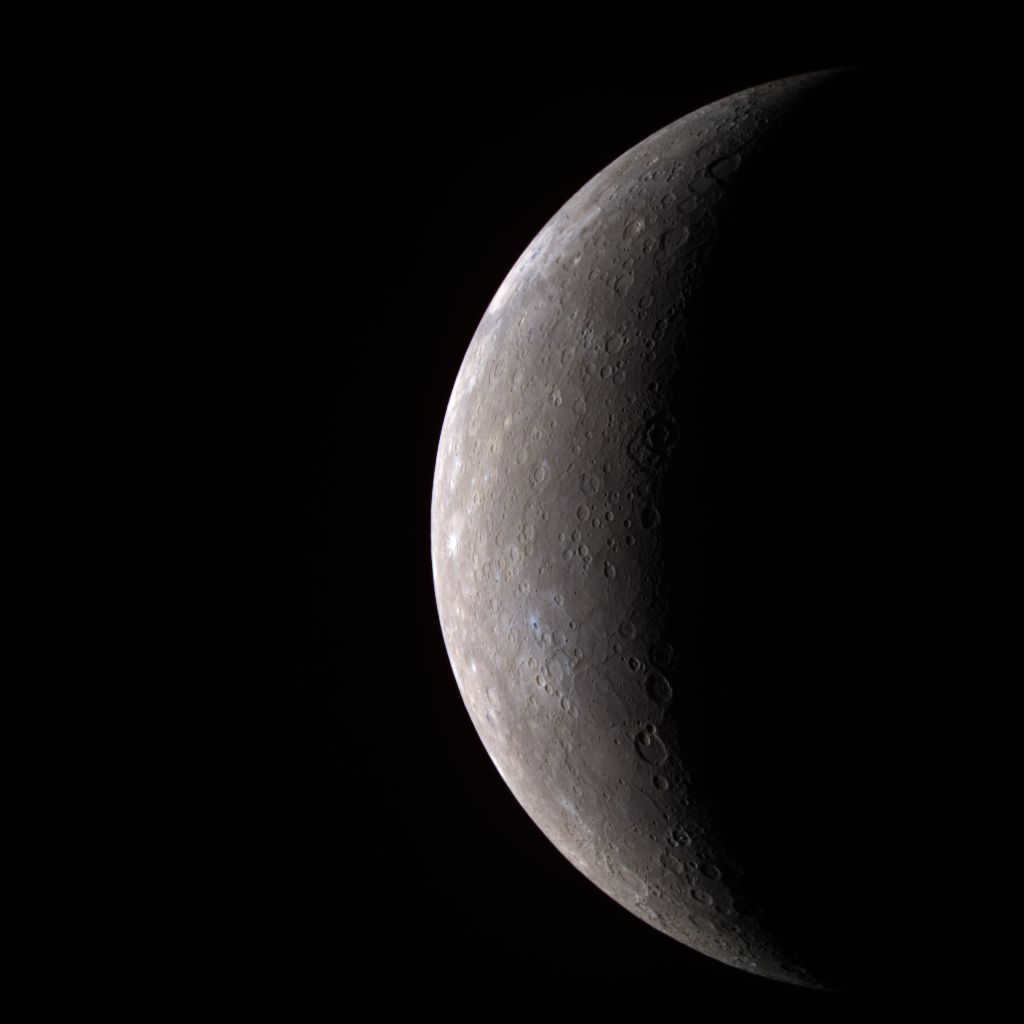
The future that can be predicted
The Russian Mercury-P spacecraft, originally scheduled for a 2019 launch by Roscosmos, will now be delayed until at least the 2030s. This mission aims to be the first ever to achieve a soft landing on the surface of the planet. Russian experts have already undertaken initial preparations for the project, including the design of the landing vehicle and the scientific equipment. However, the plan to send the Mercury-P landing station to Mercury is not part of the “Strategy for the Development of Russian Space Activities until 2030 and beyond.”
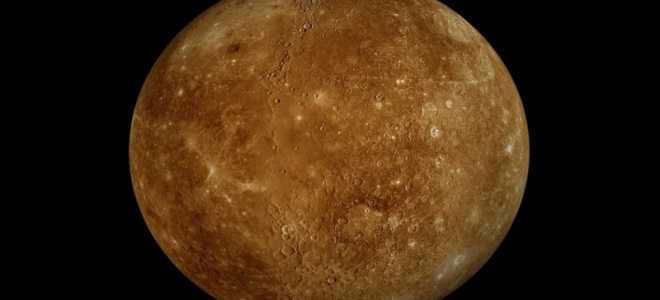
To begin with, Mercury is the tiniest planet in our Solar System. Additionally, it’s the nearest to the central star. It is a member of the Earth group.
When compared to the other celestial bodies, it has the swiftest movement across the celestial sphere. In fact, that is the reason why it was given the name of the quick-footed deity of commerce from ancient Rome.


Distinctive characteristics
Despite being a small planet, Mercury has a diameter of 4878 kilometers. To be more precise, the radius of the planet Mercury is 2439.7. Additionally, it has a mass of 3.33×10²³ kg and a density slightly lower than that of Earth, measuring at 5.43 g/cm³.
Furthermore, it possesses a number of notable features. Needless to say, we will discuss them.
Formation and makeup
Primarily, Mercury is characterized by a core primarily composed of iron, which makes up 83% of its total volume (with a radius of 1800 km). This iron core plays a significant role in generating the planet’s strong magnetic field, which is approximately 0.01 times the strength of Earth’s field. Additionally, the core interacts with the solar wind, resulting in the formation of a magnetosphere.
The magnetosphere refers to the region surrounding a planet that contains a low-density plasma, and its properties and behavior are influenced by the planet’s magnetic field.
Surrounding the core is a silicate mantle approximately 600 km thick, while the crust varies in thickness from 100 to 300 km. The composition of Mercury can be described as abundant in both metals and silicates.
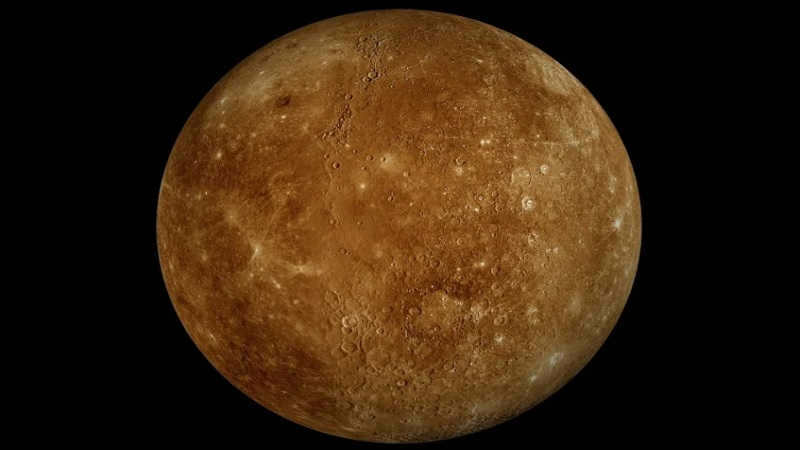
Lunar-like Surface and Impact Craters
The surface of the planet can be compared to the lunar landscape, featuring impact craters scattered across its terrain. Scientists theorize that the regions with a higher concentration of craters were formed at an earlier stage compared to those with fewer craters.
It is highly likely that volcanic activity occurred in the past, resulting in certain areas being covered in molten lava. This process led to the formation of smooth plains surrounding the craters. However, volcanic activity ceased as the planet’s crust thickened.
Subsequently, the once-hot lava cooled down, causing it to contract and resulting in the shrinkage of the crust. As a consequence, the rocky crust fractured, creating a scale-like pattern. These geological processes were accompanied by tectonic movements and intense seismic activities.
By the way, these scaly edges, which are known as escarpments, stretch for hundreds of kilometers.
However, additional alterations in the landscape are directly linked to encounters with other celestial objects.
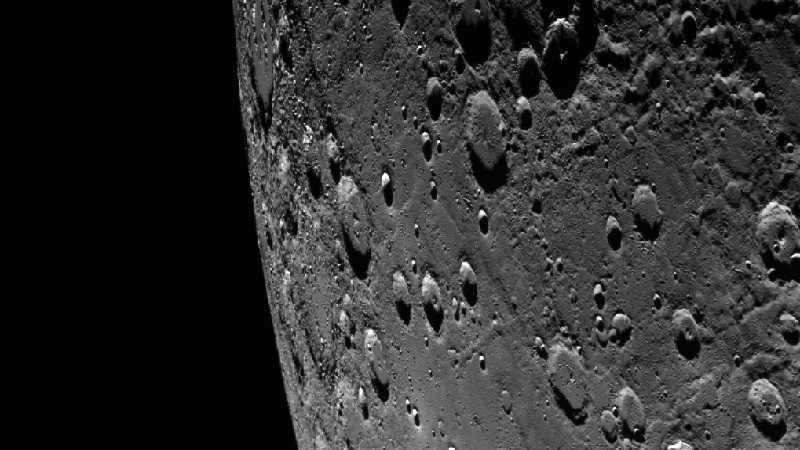

Mercury’s Atmosphere and Temperature
It has been discovered that the atmosphere primarily consists of atoms from the solar wind, such as helium, sodium, argon, potassium, oxygen, and hydrogen. However, due to the weak magnetic field, the atmospheric layers have low density and are largely absent.
Of particular importance is the extreme temperature variation experienced on Mercury’s surface. In simple terms, it undergoes rapid heating and cooling.
According to scientists, the equatorial region experiences temperatures ranging from -173 degrees at night to +427 degrees during the day. In contrast, the polar regions have temperatures that do not exceed -93 degrees. It is possible that there is ice present inside the craters in these areas. However, this hypothesis has not been substantiated by any evidence thus far.
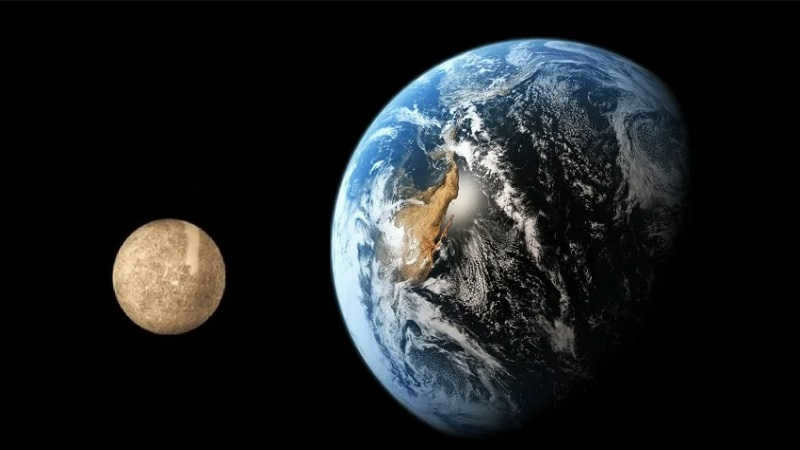
What is Mercury’s orbit and rotation?
To start with, astronomers have determined the path and trajectory of Mercury. Therefore, its orbit is in the shape of an ellipse and is highly elongated, with an average speed of movement being 48 km/s.
The time it takes for Mercury to orbit around the Sun is only 88 days, making it the shortest period among all the planets in our solar system. However, a day on Mercury, known as a sidereal day, lasts 58.65 Earth days.
Interestingly, Mercury has a minimal inclination of its axis compared to other planets in the solar system, measuring at 1/30 degrees. However, its eccentricity is the highest at 0.205.
Furthermore, the acceleration due to gravity on Mercury is 3.7 m/cm² and its second escape velocity is 4.25 km/s.
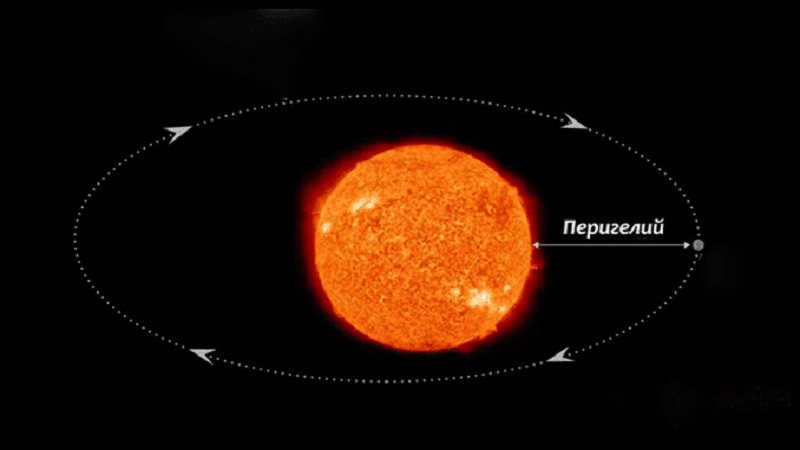
Fascinating information about Mercury
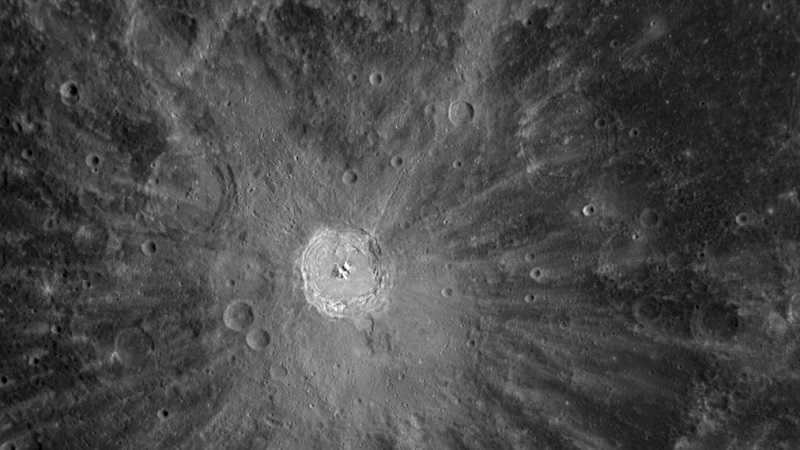

- It should be noted that Mercury does not have any natural satellites.
- According to one theory, at some point in the distant past, Mercury was a moon of Venus. However, there is another version which suggests that during the formation of our solar system, Mercury collided with Venus and some of its material was taken by Venus. The true origin of the planet is still unknown.
- The smallest planet in our solar system has the highest concentration of iron in its core.
- On its surface, scientists have discovered the scorching lava plain known as Zhara, which is located near one of the planet’s hot spots and is situated inside a crater. Interestingly, at the very center of this plain, there is a complex system of grooves known as Pantheon or Spider.
- Kuiper, one of the craters on Mercury, is the biggest among the young craters on the planet’s surface, spanning over 60 km. Additionally, it stands out as the brightest spot on the surface.
- Back in 2008, scientists made an astonishing discovery: a tail resembling that of a comet, stretching over a staggering 2.5 million kilometers.
Distance and visibility
When viewed from Earth, Mercury appears to be no more than 28 degrees away from the Sun. This means that we can only see it for a short period of time before sunrise or after sunset.
In reality, the average distance between Mercury and the Sun is about 58 million km, with its distance from us ranging from 82 to 217 million km.
Furthermore, the apparent magnitude of Mercury varies from -1.9 to 5.5 during its lower and upper conjunctions. However, it is difficult to observe due to its close proximity to the Sun.
Interestingly, Mercury comes closer to Earth more frequently than any other planet, even though Venus and Mars have orbits that are closer to us. However, they are not as strongly connected to the Sun, which results in a greater distance between them and us.
Exploration
Despite the ancient discovery of the planet Mercury, there remains a scarcity of knowledge about it. Naturally, it is steeped in numerous myths and legends, and is often attributed with magical and fantastical properties. Nevertheless, it remains the least explored of the Earth group.
Given its close proximity to the Sun, studying Mercury has proven to be an exceedingly difficult task. However, advancements in technology and scientific progress have opened up new avenues of exploration. For instance, the use of radio astronomy and radar technology has made it possible to gather information about this enigmatic planet. Additionally, modern observations have been made using CCD radiation receivers, providing us with invaluable insights and visual representations of the mysteries of outer space. As the saying goes, “there are many ways to skin a cat.”
In actuality, just two spacecraft have successfully reached Mercury. Initially, during the 1974-75 period, Mariner 10 completed three orbits around Mercury. Mariner 10. Subsequently, in 2004, in 2004. The AMS Messenger. Incidentally, the latter became Mercury’s inaugural man-made satellite.
It was only in 2009 that scientists managed to construct a comprehensive map of the planet, relying on the imagery captured by the spacecraft.
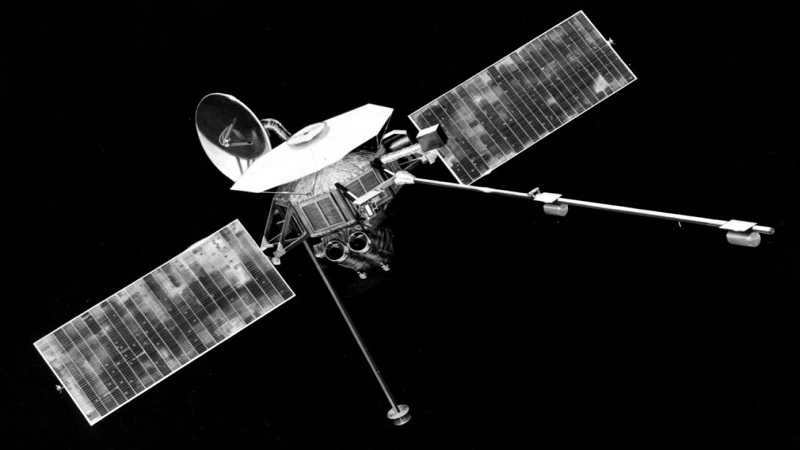

So, we have acquired knowledge about the planet Mercury and its main characteristics. Despite its small size, it possesses intriguing and distinctive features.
There are plans for extensive exploration and research of this celestial body in the future. Objectives have been set and projects and spacecraft are currently being developed. Only time will tell what discoveries await us and if we will be able to comprehend this distant counterpart to Earth.
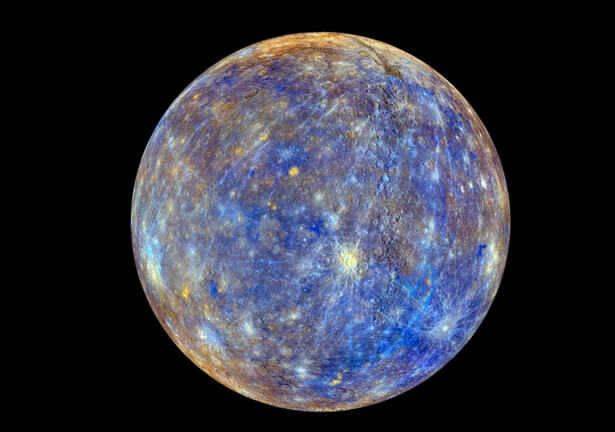

The title of the smallest planet in the solar system has been given to Mercury, which has also been the closest planet to the Sun since 2006. This distinction was made after Pluto was reclassified as a dwarf planet and removed from the list of full-fledged planets.
Mercury has a diameter of only 4,900 kilometers, while Earth has a diameter of 12,742 kilometers. In terms of volume, Mercury is only 0.05 times the size of Earth.
Exploration
Extensive research on this planet has been conducted by astronomers over a significant period of time. The earliest documented observations can be traced back to the 14th century BC in the ancient text known as “Mul apin”, which was compiled by Assyrian astronomers.
In 1631, scientists had their first glimpse of the planet through a telescope and witnessed the rare phenomenon of Mercury passing across the solar disk.
Advancements in technology allowed for more in-depth exploration of Mercury towards the end of the 20th century. The Mariner 10 satellite, launched during this time, provided the first-ever images of the planet’s surface. Subsequently, from 2008 to 2011, the “Messenger” spacecraft extensively surveyed Mercury, capturing images of nearly the entire surface of this small celestial body. Additionally, the mission conducted various geomagnetic and geological studies.
The appearance of the planet Mercury
The surface of Mercury has a brownish-gray color. In terms of topography, it bears a striking resemblance to the Moon, as its entire outer layer is adorned with numerous craters resulting from collisions with celestial objects. This abundance of impact craters can be attributed to the planet’s lack of a substantial atmosphere, which would otherwise shield it from meteors and comets.
Moreover, Mercury boasts extensive mountain ranges characterized by sharp ridges and rocky formations, resembling colossal surface “folds”.
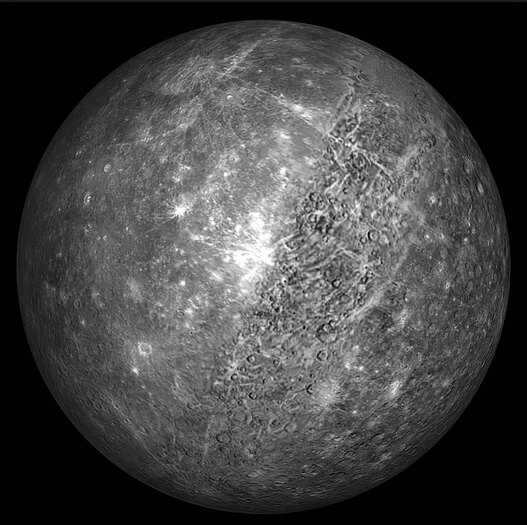
The tiniest planet in our solar system is Mercury
Massive-scale eruptions
Research into the surface of the planet has confirmed that during its formation, numerous volcanoes were active across the entire surface. The most compelling evidence of such phenomena was preserved at the northern pole, which was least exposed to cosmic impacts.
According to the obtained data, scientists suggest that the layer of lava at the northern pole measures 2 kilometers in thickness. Lava flowed out from volcanic vents that formed as a result of damage to the outer crust. The largest lava tube detected by the satellite is 25 km long. Based on calculations, this opening could have spewed out enough lava to cover an area of 200 km².
Mercury’s Atmosphere
For a long time, scientists believed that Mercury’s atmosphere was completely nonexistent. However, the “Mariner 10” mission discovered that there are indeed gases present on the planet’s surface, although in very small quantities.
Mercury’s atmosphere, which is more accurately referred to as the exosphere, is composed of oxygen (O2), hydrogen (H2), sodium (Na), potassium (K), and helium (Ne). Due to the weak gravity on Mercury, these gases do not remain close to the planet’s surface and instead escape into outer space. It is believed that helium and hydrogen are produced on Mercury, while the other elements enter the exosphere as a result of solar winds.
Magnetic Storms
Magnetic storms, rather than atmospheric storms, are a frequent occurrence on Mercury. Despite the planet’s magnetic field being significantly weaker (just 1% of the strength of Earth’s), powerful magnetic tornadoes occasionally form as a result of interactions with particles from the solar wind.
Temperature
The planet has the most extreme temperature range in the solar system due to its lack of a full-fledged atmosphere. It experiences a maximum temperature of approximately +427°C and a minimum temperature that is close to -173°C.
Despite being located close to the Sun and having a record high temperature of +427°C, Venus is actually the hottest planet in the solar system, with an average temperature that is significantly higher.
Ice has been discovered on Mercury as well. Scientists first proposed this idea in 1991, and it was later confirmed with data from the “Mesenger” radar. The ice is located in deep craters at the north and south poles, where there is constant shadow.
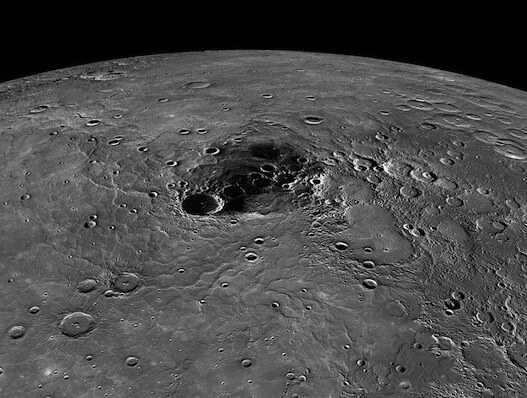

At the north pole of Mercury, there is a prominent crater known as “Prokofiev”. The craters in this area are known to contain ice, which is covered with a dark organic substance. The image shown is from NASA’s Johns Hopkins University Applied Physics Laboratory and Carnegie Institution of Washington.
Time on Mercury
A single day on the planet Mercury lasts approximately 176 Earth days, while a year is only 88 days long. These unique measurements can be explained by the planet’s orbital speed, which is significantly faster than its rotational speed. As a result, it takes less time for Mercury to complete a full orbit around the Sun than it does to rotate once on its axis.
There are theories suggesting that Mercury’s rotational speed was much higher in the past, but it has gradually decreased over time due to the influence of the Sun.
Density and gravity
Despite its small size, Mercury possesses a significant density due to its composition of rock and iron. It boasts the second highest density in the entire solar system, measuring at 5.43 g/cm3. Earth takes the top spot in this category, thanks to its substantial size and centrifugal force.
Gravity on Mercury is only 38% of that on Earth. Therefore, if you weigh 100 kg on Earth, the scale would display 38 kg on Mercury.
Researchers have discovered that the iron core of Mercury is in a liquid state, with a radius of approximately 2 thousand kilometers, which accounts for 80% of the planet’s overall radius. This unique proportion between the core and the rest of the layers sets Mercury apart from any other known planet.
So, how can we explain the phenomenon of such a large core?
There are currently two working theories:
- Initially, Mercury was about 2.25 times larger than its present size. However, after a collision with a massive cosmic object, it lost most of its outer layers and assumed its current shape.
- During the planet’s formation, the Sun dispersed light elements into the far reaches of interplanetary space, resulting in Mercury’s structure being enriched with such dense matter.
Mercury’s Shrinking and Cooling Core
The core of Mercury is believed to be gradually cooling and shrinking in size, according to astronomers. This phenomenon is responsible for the planet experiencing massive earthquakes and its overall reduction in size. The presence of long, steep ledges on its surface serves as evidence for this hypothesis.
Unique Orbital Motion of Mercury
Mercury stands out due to its distinct orbital motion, characterized by variable speeds. When it is farther away from the Sun, its movement slows down, while it accelerates when in close proximity. This peculiar characteristic of Mercury has even caused the Sun to momentarily pause and reverse its direction.
It is important to note that Mercury’s rotation around its axis remains constant.
Passing over the sun’s surface
As Mercury is the closest planet to the sun, it presents a significant challenge to observe it from Earth, except during sunrise or sunset. However, approximately 13 times per century, this small planet can be seen passing across the solar disk. In the 21st century, it has already occurred twice – on May 7, 2013, and November 8, 2006. The next similar event will take place on May 9, 2016, and November 11, 2019.
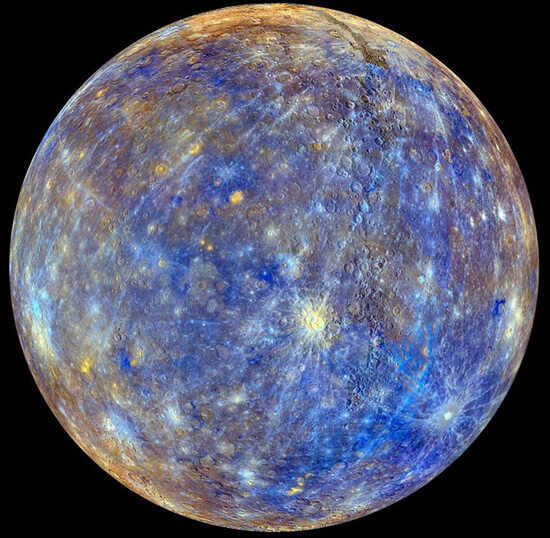

Mercury is the tiniest planet in our solar system. The most precise picture of Mercury captured by NASA during the Messenger mission. The colors are deliberately more intense.
Interesting details about Mercury:
- Mercury is located approximately 58 million kilometers away from the Sun.
- To reach Mercury’s orbit, Messenger had to travel a distance of 79 million km and complete 15 orbits around the Sun to synchronize with the planet.
- When Mercury is at its closest point to the Sun, it appears three times larger than its size as observed from Earth.
- Due to its lower gravity, a person would be able to jump 2.6 times higher on Mercury compared to our planet.
- A spacecraft takes six years to travel from Earth to Mercury.
- A radio signal transmitted from Mercury to Earth and back would take approximately five minutes to return.
- In terms of size, this small planet is even smaller than some of the moons orbiting giant planets, such as Titan and Ganymede.
- The core of Mercury is comparable in size to the Moon.





